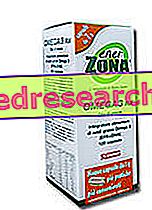Pregnancy and Licorice
Licorice in pregnancy: introduction
Licorice (in English "liquorice" or in American "licorice") is the common name of a botanically defined herbaceous plant G. glabra.
Licorice, especially in roots, has a grain number of food applications. On the other hand, this product contains some dubious active ingredients whose safety is often the subject of controversy.
In this article we will cover in detail the implications that licorice consumption may have in pregnancy.

General information on licorice
Of the licorice the root is consumed, endowed with a bittersweet taste and a characteristic taste, as well as various phytotherapeutic properties attributable mainly to the active ingredient called glycyrrhizinic acid. By virtue of its pharmacological characteristics, the consumption of licorice can have several useful applications but also several contraindications. In this article we will explain its role in the diet during pregnancy.
The licorice root is not eaten, rather it is chewed and sucked. However, it is possible to obtain the drug, extract and pure aroma, widely used both in industrial and home production.
Insights: notes on botany on licorice
The licorice plant is a perennial herb that belongs to the Fabaceae Family, or that of the legumes, Genus Glycyrrhiza and hairless species. Native to southern Europe and some parts of Asia, such as India, licorice is not "related" to other plants with similar taste such as anise, star anise, wild fennel.
Property and Use
Properties of licorice
Licorice extracts have a number of medical applications and are also used in herbal medicine or as herbal remedies. Its properties are: pain reliever-anti-inflammatory for the stomach, bronchodilator, expectorant and laxative.
Glycyrrhizin has also demonstrated antiviral, antimicrobial, anti-inflammatory, hepatoprotective and blood pressure increasing effects in vitro and in vivo. Furthermore, intravenous glycyrrhizin slows the progression of viral and autoimmune hepatitis. Locally applied licorice has demonstrated a positive activity against atopic dermatitis in a clinical study. It can also be useful in treating hyperlipidemia (high amount of fat in the blood). It also appears effective in the treatment of inflammatory skin hyperpigmentation. Some data suggest that it can be applied in the prevention of neurodegenerative diseases and tooth decay.
Use of licorice
For thousands of years licorice has been used for healing purposes for indigestion, inflammation of the gastro-duodenal mucosa (gastritis), gastro-duodenal ulcer, cough and constipation. This is one of the rare cases in which the application of folk medicine corresponds to that of traditional medicine.
Pregnancy toxicity
Pregnancy, licorice and child intelligence
Scientists at the University of Helsinki (in Finland) have hypothesized that one of the active ingredients contained in licorice, when taken during pregnancy, may affect the unborn child's IQ, memory capacity and even cause attention deficit / hyperactivity disorder (ADHD).
Researchers have discovered that eating licorice during pregnancy can be linked to a number of fetal development problems. To confirm it would be a research (also published in the "Journal of Epidemiology") carried out on 378 adolescents of an average age of 12.5 years (born in 1998). In Finland, compared to the rest of the countries of the European Union, the consumption of licorice is higher thanks to the popularity of the "salmiakki", a savory snack with the taste of the famous root. According to the research, girls whose mothers had consumed large amounts of licorice during pregnancy (over 500 mg of glyciteine per week, compared to a lower limit of 249 mg / day) were more likely to enter precocious puberty. Furthermore, girls and boys whose mothers had consumed high amounts of licorice obtained on average seven points less in intelligence tests, and in parallel a higher score in attention deficit hyperactivity disorder (ADHD).
Disputes over the study of licorice in pregnancy
As with many other diet studies, the overall picture is too complex to establish a direct cause-effect correlation. Moreover, glycyrrhizin (active ingredient of licorice) is not exclusive to this plant and is also found in other products. Instead, only the intake of licorice was measured as part of the study, so the actual amount of glycyrrhizin that women took is only a rough estimate. There are many factors that influence cognitive development and it is not clear whether the researchers actually took them into account.
Does licorice hurt during pregnancy?
Difficult to say. For the moment there are no guidelines to suggest that pregnant women should completely avoid licorice. However, as a precaution, it is advisable to avoid consuming licorice root, herbal remedies, extracts, drugs and flavorings that contain it.
Side effects
Side effects of excess licorice
Excessive consumption of licorice, estimated at over 2 mg of active ingredient per kilogram of body weight per day, can cause various side effects. In particular, they seem more frequent unexplained: hypokalemia (abnormal reduction of potassium in the blood), maintenance of natremia (blood sodium), muscle weakness, aldosterone reduction, renin-angiotensin system decline and increase in atrial natriuretic hormone (for compensate for variations in homeostasis).
Liquorice intoxication is therefore responsible for impaired corticosteroid metabolism (hypermineralocorticosteroid syndrome). In particular, glycyrrhizin and enoxolone exert an inhibitory effect on the degradation of cortisol and its main active constituents. For this reason, in addition to the clinical signs and symptoms described above, there are also: edema, weight gain or loss and arterial hypertension.
Safety
Safety of licorice consumption
The US Food and Drug Administration (FDA) believes that foods containing licorice and derivatives (including the active ingredient glycyrrhizin) are generally safe, provided they are not consumed in excess.
Although healthy people should need about 400 mg / day of active ingredient (about 200 g of candy) to trigger symptoms, other jurisdictions suggest not exceeding 100-200 mg / day of glycyrrhizin, which can be translated into about 70-150 g of licorice.
A normal and healthy person should be able to consume 10 mg of glycyrrhizin a day without incurring any side effects.
As we have anticipated in the paragraph concerning the consumption of licorice in pregnancy, it is advisable to avoid it in large quantities. A reasonable consumption (<249 mg / week of glycine) should not have any negative effects.
Contraindications
Contraindications of the use of licorice
They must avoid large quantities of licorice, or at least dosages equal to or greater than 100 mg / day, especially people:
- with heart disease
- Suffering from kidney failure
- hypertensive
- In pregnancy (but only in considerable quantities).
In these cases, 50 mg / day of licorice can be considered safe.
Other Uses
Other uses of licorice
Most of the marketed licorice (90%) is used as a flavoring agent for tobacco, in particular for US cigarettes, to which licorice gives sweetness and a distinctive flavor. Nevertheless, the licorice drug exerts a bronchial dilator that improves the inhalation of smoke.
The taste of licorice (from extract or aroma) is also very used (5% of production) in the confectionery industry for sweets and chewing gum, ice creams, synthetic sweeteners (in some European countries and the Middle East) and in the pharmaceutical one as excipient ( 5% of production).



